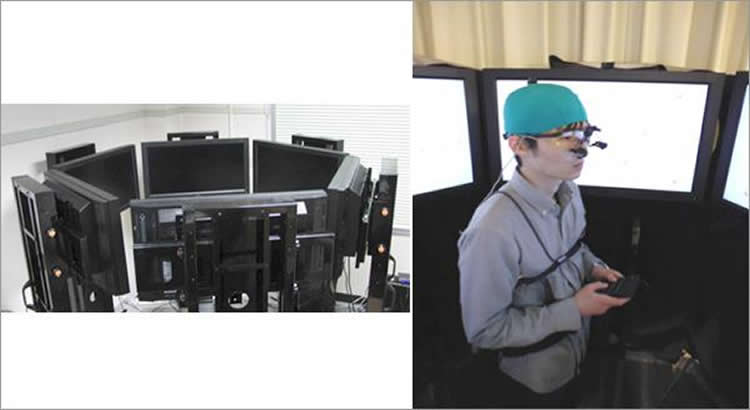Summary: Researchers utilize a visual search experiment to demonstrate the human visual system has the ability to perceive objects beyond the limits of our visual field.
Source: Tohoku University.
Spatial representations of surroundings, including those outside the visual field, are crucial for guiding movement in a three-dimensional world. The visual system appears to provide sufficient information for movement despite our visual field being limited to the frontal region. However, this theory had not been scientifically tested until now.
A group led by Professor Satoshi Shioiri from the Research Institute of Electrical Communication at Tohoku University in Japan, used a visual search experiment to demonstrate that the human visual system indeed has the ability to perceive things beyond the limits of the visual field. The team designed a 6-panel-display which covered the 360 degree area surrounding the viewer. On each panel display, six letters appeared at the same time.
The viewer was asked to find a particular letter and the time it took to find the target was recorded. After repeated exposure to the same spatial layouts surrounding the viewer, locating the target object became faster even if the viewer had no explicit knowledge of the repetition. This happened even when the target object was located in the rear, which shows that visual processing is not limited to the visual field, but extends to a wider field around the viewer.

The results indicate that representations of surroundings exist in the brain that can be used to “look back” without the need for turning, perhaps for smooth and efficient movement. In other words, our brain constructs a 360-degree world even though visually we are usually only aware of the area in front of us.
This is the first study that has scientifically sought to demonstrate this spatial ability. It is an important step for revealing the brain function which links perception and movement.
Source: Satoshi Shioiri – Tohoku University
Publisher: Organized by NeuroscienceNews.com.
Image Source: NeuroscienceNews.com image is credited to Satoshi Shioiri.
Original Research: Open access research for “Spatial representations of the viewer’s surroundings” by Satoshi Shioiri, Masayuki Kobayashi, Kazumichi Matsumiya & Ichiro Kuriki in Scientific Reports. Published May 8 2018.
doi:10.1038/s41598-018-25433-5
[cbtabs][cbtab title=”MLA”]Tohoku University”Eyes in the Back of the Head.” NeuroscienceNews. NeuroscienceNews, 10 May 2018.
<https://neurosciencenews.com/visual-field-9025/>.[/cbtab][cbtab title=”APA”]Tohoku University(2018, May 10). Eyes in the Back of the Head. NeuroscienceNews. Retrieved May 10, 2018 from https://neurosciencenews.com/visual-field-9025/[/cbtab][cbtab title=”Chicago”]Tohoku University”Eyes in the Back of the Head.” https://neurosciencenews.com/visual-field-9025/ (accessed May 10, 2018).[/cbtab][/cbtabs]
Abstract
Spatial representations of the viewer’s surroundings
Spatial representation surrounding a viewer including outside the visual field is crucial for moving around the three-dimensional world. To obtain such spatial representations, we predict that there is a learning process that integrates visual inputs from different viewpoints covering all the 360° visual angles. We report here the learning effect of the spatial layouts on six displays arranged to surround the viewer, showing shortening of visual search time on surrounding layouts that are repeatedly used (contextual cueing effect). The learning effect is found even in the time to reach the display with the target as well as the time to reach the target within the target display, which indicates that there is an implicit learning effect on spatial configurations of stimulus elements across displays. Since, furthermore, the learning effect is found between layouts and the target presented on displays located even 120° apart, this effect should be based on the representation that covers visual information far outside the visual field.






